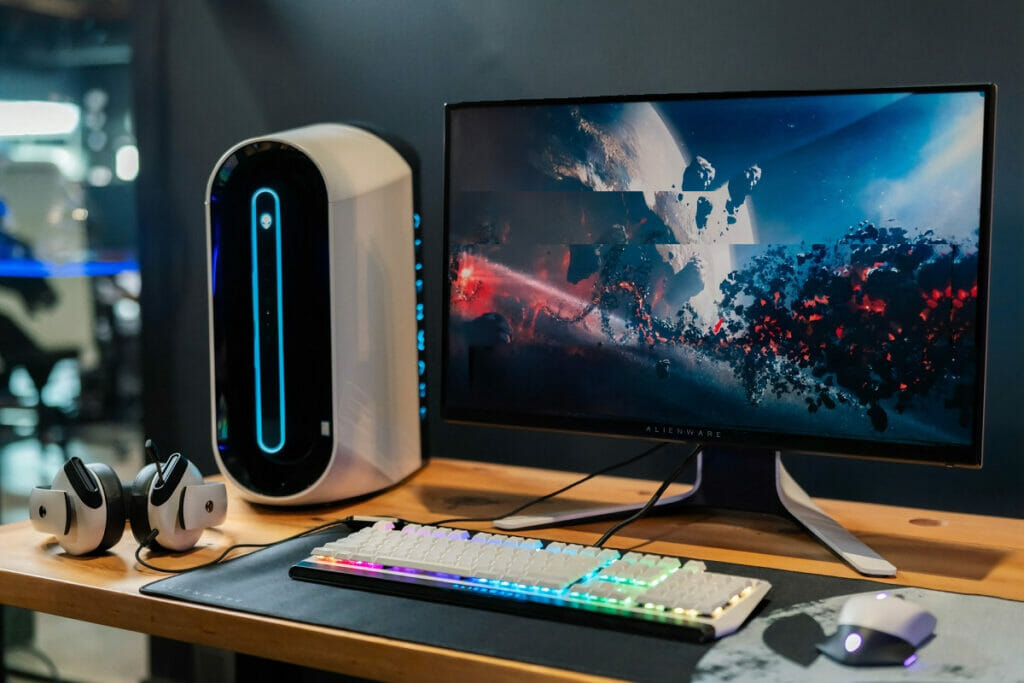Screen tearing is one of the most common problems facing people who use computers. While this is a particularly common and frustrating problem for PC gamers, screen tearing is an issue that can affect anyone using a computer and it can totally ruin your browsing experience (speaking of browsing, check out our guide to downloading Firefox for Raspberry Pi here).

One of the big drawbacks and issues with computer usage is that there can be many causes and solutions to performance issues such as screen tearing, as well as many potential solutions.
The sheer amount of different configurations and types of computers, software, and monitors being used by various people can make pinpointing a specific cause and solution very difficult.
This is why in this guide we’re going to look at some of the most effective and common solutions to this issue, with the hopes that at least one of them will help address and solve whatever issue is causing screen tearing on your particular system.
But first, let’s look at what screen tearing actually is.
What Is Screen Tearing?
Screen tearing is a type of visual performance issue or artifact that is visible on a video display or computer monitor and happens when a display device attempts to render information from multiple different frames in a single screen draw or frame.
This tends to look as if there is a horizontal tear in the image that appears momentarily, and can even show two different frames stitched together haphazardly to create a strange mixing of images that is inconsistent with the intended image being rendered.
This typically occurs when the display device and its refresh rate aren’t in sync with the computer or software rendering the image, or a potential issue with the video feed.
This can be seen when browsing, as well as during computer gaming and even watching videos or movies, and while the issue only lasts a fraction of a second, it is often repeated and can totally spoil your visual experience.
Solutions
In this section, we’re going to look at potential solutions to the issue of screen tearing.
Change Resolution And Frame Rate
The first and main issue that could be causing tearing is that the refresh rate of the monitor is incorrect, or the resolution is incorrect.While this may not always fix your problem, it’s a relatively easy thing to check and eliminate.
To do this, do a Windows search for resolution, then select ‘change the resolution of the display’. Once on this page, select “Advanced display settings”. Once here, a window will pop up showing key details about your particular computer display. Select the option Display adapter properties for Display 1.
Next, your hardware properties should be displayed. Select ‘list all modes’ in the ‘adapter’ tab. You should then see a list of various resolutions on the screen. Change them according to the correct resolution of your display and hardware and press ok after each selection.
Restart your computer then check to see if the screen tearing is still occurring.
Enable Or Disable G Sync, V Sync, Or Freesync If Supported
If you use an NVidia graphics card and have a monitor which supports G Sync, or a monitor which supports freesync, you may be able to enable these to massively reduce or prevent screen tearing.
These technologies were specifically developed to help prevent screen tearing by ensuring a good sync between the display device and computer, so going into the Nvidia control panel or the AMD Catalyst Control Center and looking for the option to turn on G sync or freesync.
Disable Windows Game Mode
Windows introduced Game Mode to try and release a bunch of new features, supposedly helping improve gaming performance.
However there have been many issues with this software, and while it can be useful for some people, it may add performance issues to your system, particularly due to the background screen recording option. Disabling this may help reduce or eliminate tearing for you entirely.
Check Your Graphics Drivers Are Updated
If none of these fixes have worked so far, it may be time to consider looking at your graphics drivers.
Updating to newer drivers, or rolling back to an old driver if your issue appeared after a recent update, could be an immediate fix, as there are often cases where drivers are not up to date or a particular game or software isn’t yet supported by a proper graphics driver.
Be careful when updating drivers however, as this process can cause other issues, and it’s best to do this in Windows safe mode to avoid potential issues down the line.
Turn Off Frame Limits
If you’re seeing issues with screen tearing in your video games, you should experiment with turning off frame limits, as well as using V Sync, and seeing if this makes any difference to your experience.
Often this can be done in particular game settings, however, control panels such as the Nvidia control panel allow you to set global parameters to govern over all your games if you find a particular configuration for your system that prevents or reduces screen tearing.
Disable Smooth Scrolling
Smooth scrolling is something that Windows has added to allow users to scroll more evenly and smoothly, however it’s possible this may cause performance issues such as tearing. Disabling this will allow you to easily eliminate a potential cause of tearing.
Use The High-Performance Power Plan
Finally, ensure that your system is running on the high performance power plan to ensure you’re extracting the best performance you can out of your system, as bottlenecks in performance can massively increase the chance of screen tearing.
Summary
To summarize, your monitor may suffer from screen tearing from time to time. Whether it’s a computer monitor or TV display, this is a problem that can happen anytime, anyplace and to anyone. Hopefully, with some of our tips, you can rectify the issue in no time.
